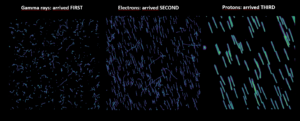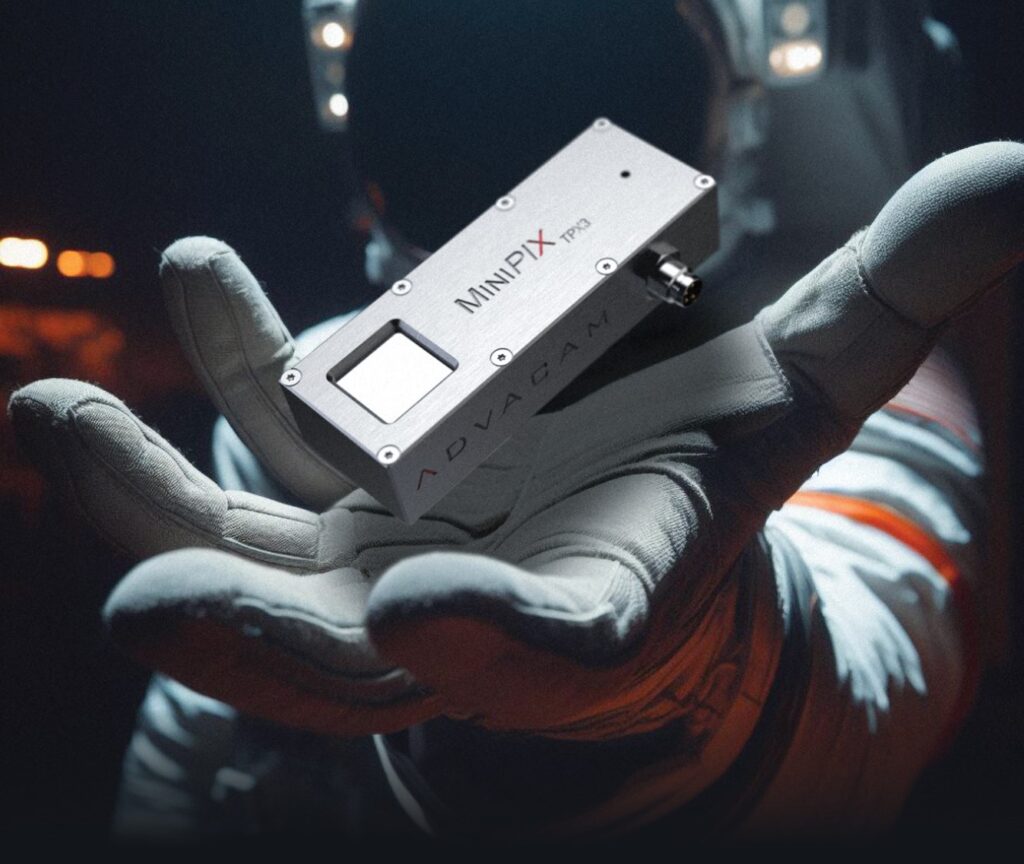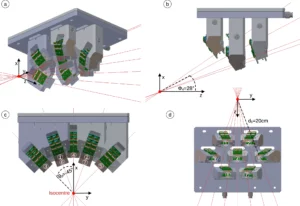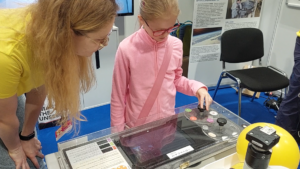ADVACAM is introducing a previously unseen technology for predicting cosmic weather. This technology provides timely warnings against increased solar activity, which can pose risks to the health of astronauts and disrupt the functionality of sensitive onboard electronics in satellites and spacecraft.
The MiniPIX SPACE particle counting camera builds upon technology originally developed for basic particle physics research at the Large Hadron Collider (LHC) at CERN. This lightweight device, weighing just a few tens of grams, can distinguish the type of each individual particle, as well as its energy and direction —a feat no other space dosimeter can achieve.
Currently, 14 of ADVACAM’s detectors are operational on the International Space Station. Company‘s chips were onboard the NASA Orion spacecraft during its moon flyby. The British company, OneWeb, is testing them for its satellite internet constellation. Moreover, the camera is set to monitor the radiation conditions at the planned international lunar station, Gateway[1][2]
„Now, ADVACAM is coming with a new ambitious dimension on how to use their detectors: aiming to predict so-called cosmic weather and introducing 4 NEW LEVELS of its monitoring.“

LEVEL 1: Monitoring Total Radiation Dose
High-energy particles can penetrate a spacecraft, posing a significant risk to both the crew and the equipment. The ability of our detectors to monitor the total dose is therefore crucial, for example, for planning mission durations or satellite lifespans.
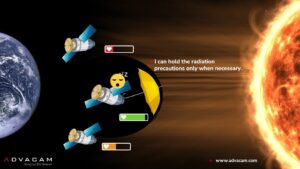
LEVEL 2: Adaptive Protective Measures
ADVACAM’s detectors can also determine the direction of incoming radiation, its energy, and particle type. These unique features allow for timely adaptation to incoming threats. The idea is to activate protective systems like shielding or “safe mode” only when detectors see truly dangerous radiation. Just as people take an umbrella when they see dark clouds.
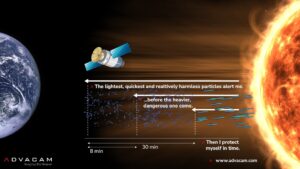
LEVEL 3: Cosmic Weather Forecast
By identifying particle types, our cameras support cosmic weather prediction. Lighter particles arrive from the Sun to Earth several minutes earlier than the heavier, more energetic, and harmful ones. This creates a valuable window for activating protective measures. Alert against truly dangerous particles can come with a thirty-minute lead.

LEVEL 4: Satellite Constellation Warning System
In the last decade, large satellite constellations have emerged. Equipping them with our detector could create a warning system. Satellites detecting dangerous activity could alert others, ensuring timely preparation against potential threats when entering radiation-exposed areas.
MiniPIX SPACE as a Satellite Component
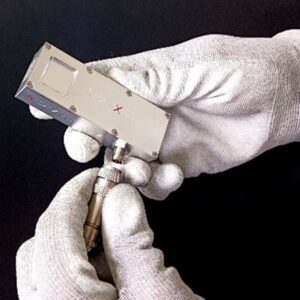
- Dimensions: 90 x 32 x 11 mm
- Weight: < 140 g
- Power Consumption: < 3 W
- SW: Data processing software provided
- Details: https://www.advacam.com
A compact, durable design prepared for use in space conditions and vacuum. A unique solution ready for integration as a radiation monitor with the ability to predict cosmic weather.
Examples of a sunstorm particles tracked by a TPX3 detector with 500 µm Silicon sensor
